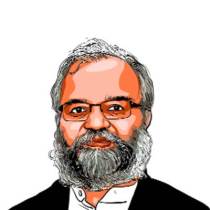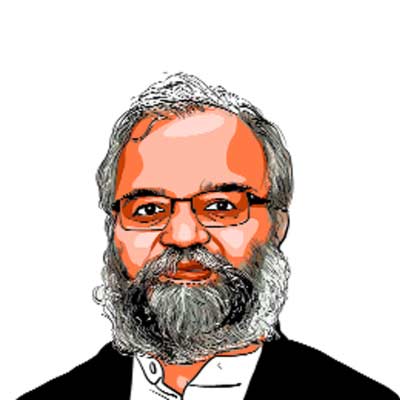Worse than UGC
Institutions like the UGC are meant to embody this principle and are designed to act as buffers, insulating universities from the massive financial and political power of the state.

The modern university is founded on the belief that the state has the obligation to support higher learning despite the fact that such learning requires autonomy from external pressures. (Representational Image)
The proposal to abolish the University Grants Commission (UGC) may be more mercy killing than murder. But this is no consolation for those who care about Indian higher education — which should mean all of us. This is because the proposal not only fails to address the reasons for the UGC’s proven ineffectiveness but also reinforces its most toxic traits.
The modern university is founded on the belief that the state has the obligation to support higher learning despite the fact that such learning requires autonomy from external pressures. Of course, historically universities have, by and large, always supported the establishment, and they continue to do so. However, it is precisely the recognition that some autonomy must be granted within the larger power structure that distinguishes the secular modern university from its religious or royal predecessors. Institutions like the UGC are meant to embody this principle and are designed to act as buffers, insulating universities from the massive financial and political power of the state.
It is no secret that our own UGC has become incapable of such principled mediation. Its complete subservience to the state was undeniably demonstrated in the case of the ill-fated Four Year Undergraduate Programme (FYUP) of the University of Delhi. When the government of the day strongly backed the FYUP, the UGC allowed it to be pushed through despite being in violation of its own norms. And when a different government opposed the programme in 2014, the UGC suddenly began to aggressively enforce the very norms that it had earlier ignored. The UGC functioned as an instrument of governmental coercion rather than a benevolent regulator, even though the same institution had taken a far more dignified stance vis-à-vis the government in the not-so-distant past.
Given how far the UGC has fallen recently, not many tears will be shed for it. But the travails of Indian higher education are due not to faulty institutional design but to the coercion and corruption of perfectly viable institutions. Merely renaming or re-tasking institutions does not address the causes underlying their predictable failure. In principle, an institution like the proposed Higher Education Commission of India (HECI) is an obvious necessity, but that is not the point. What matters is the larger administrative and political-ideological context within which it will function — or fail to function.
In terms of administrative governance, the prevailing climate favours greater and more direct external control over universities. In the neoliberal yuga, the mandatory modality of control is that of the market. Across the world today, universities are being coerced into behaving like for-profit corporations. The audit culture within which higher educational institutions (HEIs) are being evaluated requires every course of study to provide measurable returns on the capital invested. The current move to split the UGC’s mandate (to separate funding from regulation, vesting the former directly in the Ministry of Human Resource Development, MHRD) is in keeping with this culture. It shows the government’s willingness to dispense with even the semblance of financial autonomy for universities and HEIs.
The draft Act for establishing the HECI states that its first function is “promoting the quality of academic instruction and maintenance of academic standards”. This is precisely where the most daunting policy challenges are. Unfortunately, this is also where higher education policy seems to be trapped in a profoundly disabling metric of measurement. When it comes to HEIs, “quality” — or its absence — is easy to recognise but very hard to quantify.
Apart from the risk of mismeasurement, there is also the perennial problem of gaming. In the kind of institutional culture we have allowed to develop, every benchmark immediately incites attempts at manipulation, and quantitative benchmarks are particularly vulnerable to fakery. The recently scrapped Academic Performance Indicators is an apt example.
This is not to say that academic performance cannot be evaluated, but that good evaluations are fundamentally qualitative. In an overall climate of mutual mistrust, qualitative assessments tend to invite accusations of bias, creating a major headache for administrators. Quantitative metrics are the administrator’s method of evading the more difficult task of devising meaningful methods of evaluation predicated on an atmosphere of trust and professional commitment.
This brings us to the critical question that defines the larger political-ideological context within which institutions like the HECI must function. Who is responsible for the erosion of trust in the work culture of our HEIs, and how may this trust be restored? It cannot be denied that academics themselves must shoulder a significant portion of the blame, as must major political parties, educational administrators and unscrupulous educational entrepreneurs. It is ultimately pointless to argue about who did the most damage — a more constructive approach would be to focus on the ingredients necessary for the repair work that is urgently needed.
Healing must begin by acknowledging that to be successful, HEIs have to be self-governing communities. Although full autonomy may be a mirage, degrees of autonomy are crucial. This autonomy must be vested in the scholarly community, not hijacked to protect academic autocrats, nor made into a euphemism for marketisation. The belief that a cleverer, more powerful or more ruthless external regulator will somehow set things right is a damaging fantasy. Dictators may make trains run on time, but they cannot nurture knowledge.
Such a beginning seems far-fetched today, because the exact opposite is happening. The UPA government was responsible for inaugurating the administrative assault on HEIs, and the Narendra Modi government has added a political dimension to this assault. However, the current regime is distinctive in its tragic inability — or unwillingness — to distinguish between its political enemies in the HEIs and the institutions themselves. In its apparent willingness to destroy institutions in order to defeat opponents, this regime is waging a war that is being fought in institutions in Pune, Allahabad, Varanasi, Mumbai, Hyderabad, Delhi and many other places. Sadly, the proposed HECI is destined to become a weapon wielded in this war, or it will become one of its first casualties.
The writer teaches at Delhi University. Views are personal
For all the latest Opinion News, download Indian Express App
More From Satish Deshpande
- Mimicking the enemyThe Congress’s main issue is not dynasty: It is the absence of a distinct and decisive political agenda..
- A point of collisionBhima Koregaon is where three political projects of our times clash even as they try to collude with each other ..
- The impossible journalInstitutional innovations are urgently needed to sustain EPW without eroding editorial autonomy or erasing uniqueness...







































No hay comentarios:
Publicar un comentario